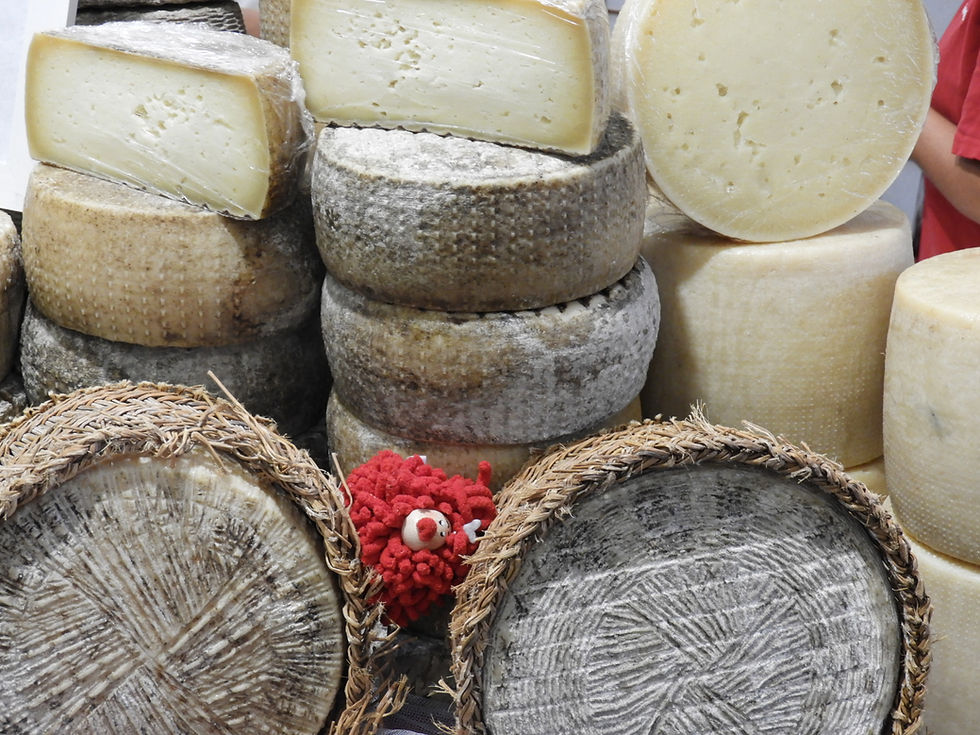Abruzzo
- Aug 26
- 3 min read
Abruzzo is located in the centre of the Italian peninsula, to the east of Lazio. It is bordered on the west by the Apennines and on the east by 150 kilometres of coastline along the Adriatic Sea. This region is renowned for its mountainous landscape, making it one of the most mountainous areas in Italy. The Corno Grande, situated in the Gran Sasso massif, stands at 2,914 metres and is the highest summit in the Apennines.

Natural Parks and Wildlife
Within the interior of Abruzzo lies the Abruzzo National Park, covering 500 square kilometres. This protected area is home to rare examples of Mediterranean flora and fauna, including chamois, wolves, bears, and golden eagles. The preservation of these species highlights the region's commitment to maintaining its unique natural heritage.
Tourism and Medieval Heritage
Over the past decade, tourism in Abruzzo has grown, particularly among Italians and other Europeans. The region boasts a wealth of castles and medieval towns, most notably near the town of L'Aquila, which experienced a devastating earthquake in 2009. Despite this increase in tourism, Abruzzo remains relatively undiscovered by international visitors. The area is sometimes affectionately referred to as "Abruzzoshire," drawing an analogy to "Chiantishire" in Tuscany, although it remains off the beaten path for most travellers.
Climate
Abruzzo's climate varies across its diverse landscapes. During spring and summer, the coast and inland hills are warm, dry, and comfortable. In autumn and winter, these areas remain dry and cold, yet still pleasant. In the mountains, the climate is characterised by dry, cold conditions throughout these seasons.

Winter Sports and Mountain Activities
The region is a notable destination for winter sports, with 21 ski areas offering a total of 368 kilometres of runs, all within a few hours of Rome. Abruzzo's ski resorts are located in the highest reaches of the Apennines, at elevations comparable to many Alpine resorts. Due to their proximity to the Adriatic and local precipitation patterns, these ski areas often receive more snow than the Alps. Cross-country skiing is also popular, especially on the high plain of Campo Imperatore in the Gran Sasso and on the Piana Grande in the Majella.
Abruzzo is home to the highest peak of the Italian peninsula, Corno Grande, and Europe's southernmost glacier, Il Calderone. The Corno Grande and neighbouring Corno Piccolo offer climbing opportunities ranging from mountain hikes suitable for beginners to challenging rock wall ascents intended for expert alpinists. The region's lesser-known peaks, particularly the gentler slopes of the Majella, provide climbers with solitude and a more tranquil experience.
Coastline and Beach Resorts
The long, sandy coastline of Abruzzo is dotted with popular beach resorts. Vasto, located on the southern coast, is a favourite destination, while Silvi Marina on the mid-coast is renowned for its high-quality sands, considered among the best in Italy.
Local Cuisine and Agricultural Traditions
The hinterland of Abruzzo remains largely undeveloped for tourism, with few restaurants serving traditional Abruzzese dishes. The best way to experience the region's culinary traditions is by visiting towns during feast days (sagre e feste), where local rituals and foods can be enjoyed. Notably, panada is a special feast prepared on some feast days and during wedding celebrations.
Agriculture continues to be the main source of income for Abruzzo. The region produces potatoes, wheat, corn, olives, and vegetables, with oregano and some of the world's best saffron grown in abundance. Livestock farming—particularly sheep, cattle, and goats—is widespread, and sheep herding is an ancient and integral part of rural life. The annual migration of sheep and people, known as transumanza, from Abruzzo through Molise to Puglia, is central to the region's pastoral traditions.
Abruzzo also takes pride in its cheeses. The Slow Cheese Presidio, Canestrato di Castel del Monte, is notable, as are Marcetto and Pecorino di Farindola, both produced in commercial quantities.

Wines of Abruzzo
The region's DOC wines include Trebbiano, Montepulciano, and Cerasuolo, although these account for only 8% of total wine production. A variety of other grape varieties are cultivated throughout Abruzzo, most in very small quantities, offering visitors a diverse tasting experience as they travel through the region.




Comments